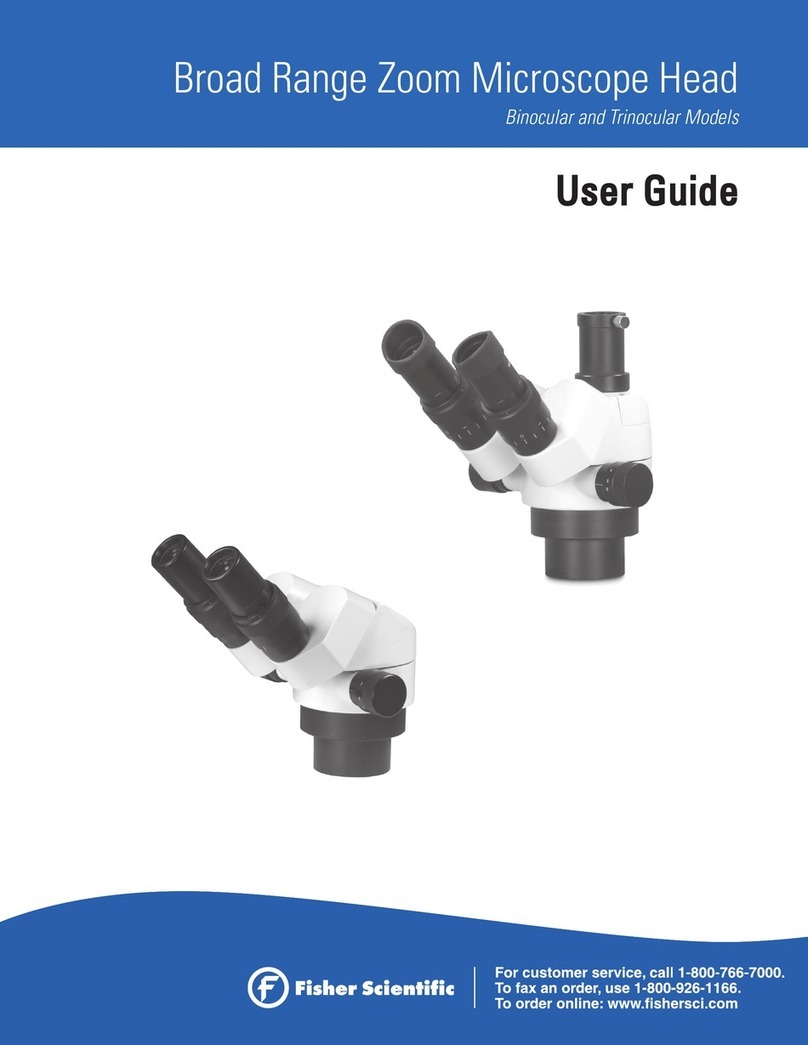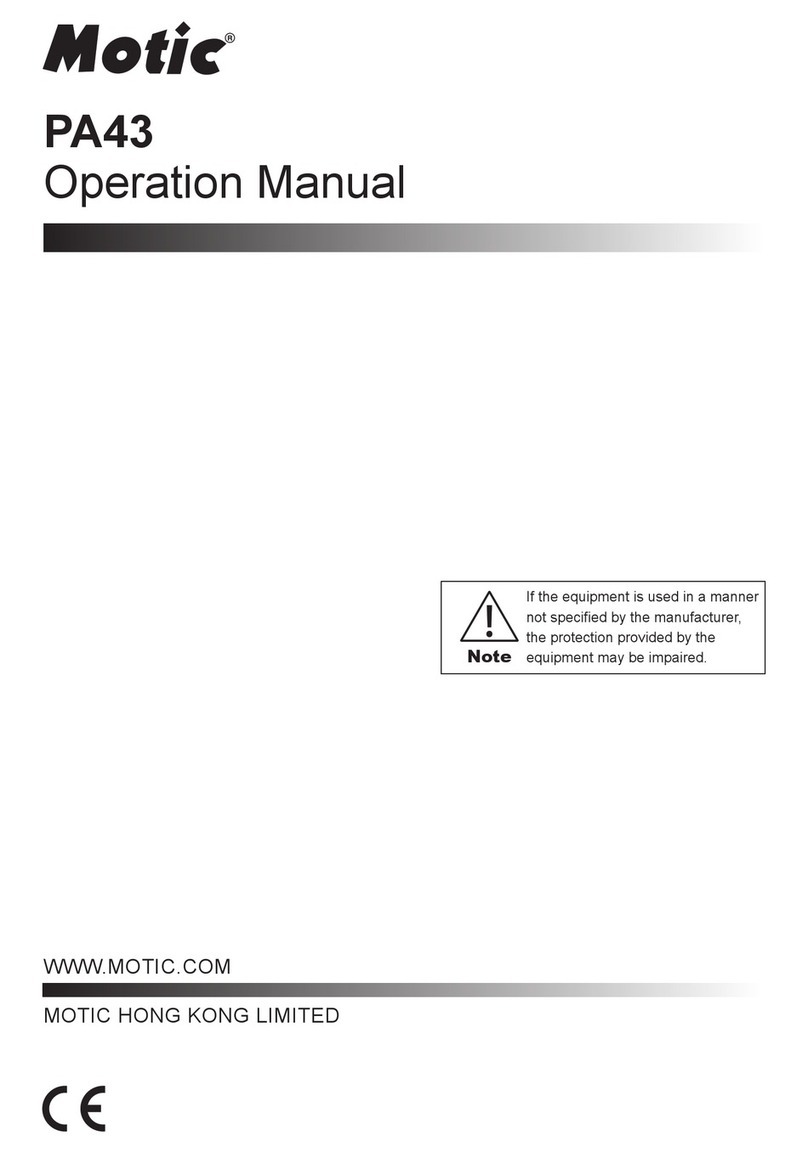
9
Microscopic Procedure: Interpupillary Distance Adjustment
• Before adjusting the interpupillary distance, bring a specimen into focus using the 10x objective.
• Adjust the interpupillary distance so that both the right and left eld of view become one.
• This adjustment will enable the user to observe the specimen with both eyes.
1. Diopter Adjustment
• Diopter adjustment compensates for differences in vision between the left and right eyes. In addition to
making observation through both eyes easier, this adjustment also reduces the extent to which focusing
is lost when the objective magnication is changed. In particular, this occurs when a low power
objective is used.
• Before adjusting the diopter, bring a specimen into focus using the 10x objective.
• Turn the diopter compensation ring on each eyepiece until the adjustment ring is adjusted to “0”
position.
• Position the highest magnication objective into the optical path and bring the specimen image into
focus by turning the coarse and ne focus knobs.
• Position either 4x or 10x objective into optical path. Without adjusting the ne and coarse focus knobs,
turn the diopter rings on the eyepieces so that the specimen images in the left and right eyepieces are
focused individually.
• Repeat the above step twice.
2. Centering the Condenser
• Set the Phase annular diaphragm slider in center position (O).
• Fully open the eld of view diaphragm.
• Move the aperture diaphragm lever in open “O” position.
• Bring the specimen image into focus, using the 10x objective.
• Close the eld of view diaphragm to its minimum setting.
• Turn the condenser focus knob so that the image of the eld diaphragm forms on the specimen
surface.
• Adjust the condenser centering screws so that the center of the eld diaphragm image matches the
center of the eld of view. This adjustment is easier to make if the eld diaphragm size is reduced to
Diopter adjustment
“0” position





























